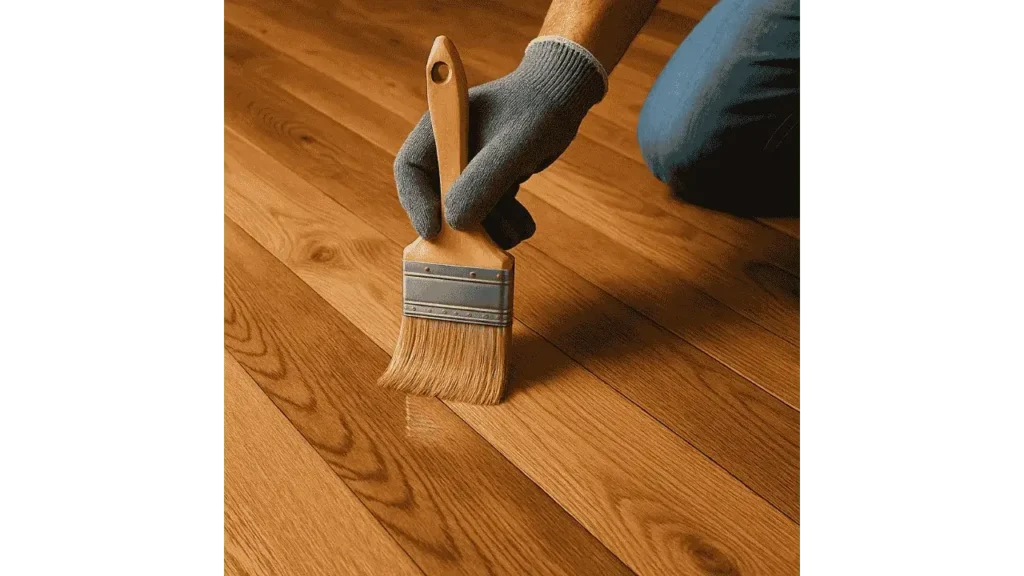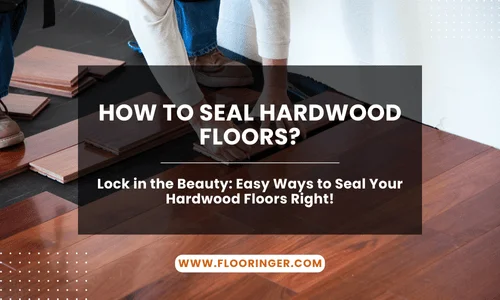Sealing hardwood floors is more than just a finishing touch; it’s a smart investment in your home’s durability and appearance. A well-sealed floor resists moisture, prevents stains, and showcases the wood’s natural charm. Whether you’re refreshing old floors or finishing new ones, the right sealing method can make all the difference in longevity and aesthetics. As flooring contractor Danielle Myers puts it,
“A good sealant doesn’t just protect the wood, it enhances everything you love about it.”

Why Is Sealing Hardwood Important?
Hardwood, while strong, is naturally porous. Without a protective barrier, it can absorb moisture, leading to swelling, warping, or mold growth. Sealing provides that critical barrier. It also defends against everyday wear like scratches, scuffs, and stains, making regular cleaning easier and more effective.
Beyond protection, sealants bring out the grain and depth of the wood. They amplify the floor’s natural tone and give it a uniform sheen, be it glossy, matte, or satin. In homes with pets or kids, a sealed hardwood floor is far more resilient to daily wear and tear.
Hardwood Floor Sealing: What Are Your Options?
Choosing the right type of sealant depends on your lifestyle, the wood type, and your design preferences. Here are the most common options:
Water-Based Polyurethane
Water-based polyurethane dries quickly and emits less odor than oil-based products. It offers a clear, non-yellowing finish that preserves the wood’s original color. Ideal for modern homes or lighter wood tones, it’s favored for its environmental friendliness and easy cleanup.
Oil-Based Polyurethane
Oil-based polyurethane provides a slightly amber tint, enhancing the warmth and richness of hardwood. It takes longer to dry but offers exceptional durability. This option suits traditional interiors and darker woods that benefit from a richer tone.
Learn More: How to Replace Carpet with Hardwood Floor?
Penetrating Oils
Penetrating oils like tung or linseed oil soak into the wood rather than sitting on top. They give a soft, natural look and can be spot-repaired over time. While not as protective as polyurethane, they allow the wood to breathe and age gracefully.
Wax Finishes
Wax offers a subtle sheen and a smooth feel underfoot. Though less durable than modern sealants, it’s easy to apply and touch up. Wax is often used in combination with penetrating oils for a classic, old-world finish.
How to Seal Hardwood Floors Step-by-Step?
Step 1: Prepare the Surface
Clean the floor thoroughly using a vacuum and a damp microfiber mop. Remove all dirt, grime, and old residue. If the floor has an existing finish, light sanding may be needed to help the new sealant adhere.
Step 2: Apply the Sealant
Use a brush or roller designed for floor applications. Start from one corner and move systematically across the room. Always apply in the direction of the wood grain for a smooth finish.
Step 3: Let It Dry
Allow the first coat to dry completely as directed, typically 2 to 4 hours for water-based and up to 24 hours for oil-based sealants. Ensure proper ventilation during drying.
Step 4: Sand Between Coats
Lightly sand the surface with fine-grit sandpaper to remove any imperfections or bubbles. Vacuum and wipe down before applying the next coat.
Step 5: Apply Additional Coats
Most sealants require at least two coats. Follow the same application process and drying times for each layer.
Trends in Hardwood Floor Finishes
Matte and satin finishes are currently leading in popularity for their ability to hide imperfections and create a modern, understated look. Homeowners also favor eco-friendly, low-VOC water-based options that are safer for indoor air quality. According to Alan Pierce, a flooring materials specialist,
“We’re seeing more clients choose matte polyurethane not just for looks, but because it hides everyday wear better than high-gloss options.”
Final Takeaways
Sealing your hardwood floors is a straightforward project that offers lasting protection and visual appeal. Whether you opt for a modern polyurethane or a traditional oil finish, the key is in the preparation and proper application. With the right sealant and regular upkeep, your hardwood floors can stay beautiful and resilient for decades.
Always test a small area before full application, and consider professional help for large or complex floor plans. A well-sealed floor isn’t just beautiful; it’s built to last.
